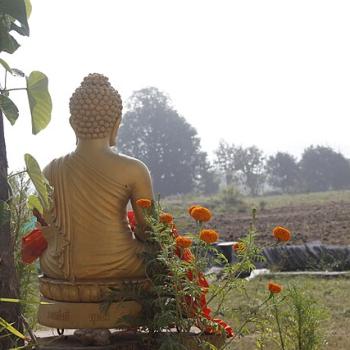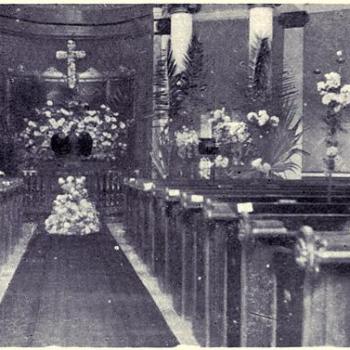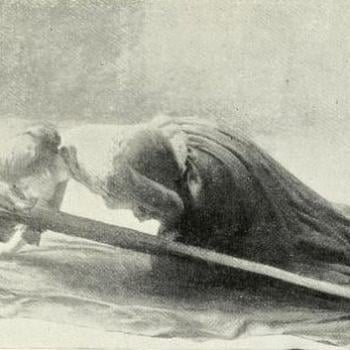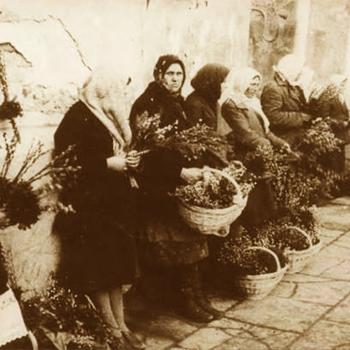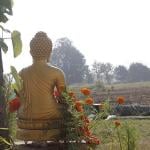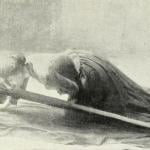Today, the 3rd of May, is marked in the Christian calendar as the Feast of the Holy Cross.
It’s the day people honor Helena’s discovery of the true cross.
Helena is the mother of Constantine “the Great.” Don’t want to confuse him with those lesser Constantines. Apparently the Brits like to say she was English, and want her to have been the daughter of a king. Others suggest a lower rank, including stable maid. Which, frankly, I would much rather.
Whatever, it doesn’t look like her life was all that easy. Until her son took over as head of the Roman Empire. Then things changed. She was a pious person, an actual Christian, I believe. Unlike her son who was in the tyrant business above all else. He, the son, actually seemed to have trouble distinguishing Jesus from Sol Invictus.
Not so, Helena. Her major contribution was to the religious tourist industry in Israel & Palestine. As well as giving the relic industry a much need shot in the arm.
Between 326 and 328 Helena traveled to the Holy Land and her tour guides at the time helped her to “discover” the sites of the nativity in Bethlehem, the ascension, Jesus’ tomb, the true cross, including several of the nails, as well as, on a side trip, the site of the burning bush.
Pretty cool. And I have no doubt she believed these were all exactly what they were presented as.
And. If you go to Israel and Palestine today to visit the sites of Jesus’ life, you’re pretty much walking in Helena’s footsteps.
And that set me to thinking. The relics, they’re interesting. And worth thinking about.
But I believe the more important thing is that thing I joked about being the religious tourist industry.
There’s something important in that. And, for me, Helena offers something more when we think of her journey to the holy land, and maybe anyone’s journey to any holy land.
Some years ago I was in the First Unitarian Church in New Bedford, in Massachusetts. It was some sort of clergy gathering. I recall being caught by the astonishing Tiffany mosaic above the pulpit.
Even partially obscured by some amateur’s attempt at preservation through a thick application of shellac, you can’t miss how amazing it is, and the luminosity of the mosaic shining though, the image, titled, of course, “Life’s Pilgrimage.” At three hundred square feet it is the largest of Tiffany’s many mosaics.
I would add, like that grand mosaic, some things in life are unavoidable. I’m coming to suspect pilgrimage is one of them. Helen’s for sure. But, also ours.
The mosaic features a bearded man on what is obviously a dangerous mountain path with an angel just behind him. Made me think of that once ubiquitous bumper sticker, “Not all who wander are lost,” a slight paraphrase of a line in a poem in J. R. R. Tolkien’s novel, the Fellowship of the Ring, “Not all those who wander are lost.” And there I was confronted with wandering, thinking I’m doing one thing, going to a meeting, and what does it turn out to be but a pilgrimage!
And, talking about images that point the way. That way is seen, always, as the line goes, through a glass darkly. There’s always some confusion. The way is cloudy, like going through a mist. And, and, there in front of me, the glory was indeed partially obscured by that well-meaning but wrong-headed shellac. Seems an important point. Like Helena’s gullibility along with her piety.
The online version of my personal favorite dictionary for American English, Merriam-Webster gives two definitions for that word “quest.” First as “a journey made in search of something” and second, “a long and difficult effort to find or do something.” “Pilgrimage,” as it turns out, is also given two definitions. The first is “a journey to a holy place” and the second is “a journey to a special or unusual place.”
The dictionary goes on to cite the first usages for both English words in the fourteenth century. That can be a bit confusing as pilgrimage is one of the oldest of spiritual practices, and the idea of a quest is perhaps the oldest literary motif there is, songs of quest were sung around campfires, and became the subjects of the first bards in far distant antiquity. The quest is our human desire to find the treasures of our hearts. Pilgrimage is the journey of the heart. They are something critical for us, if we ever want to move from our status quo, from the comfortable shallows of our lives, and into our depths.
And, let’s be clear, like pretty much all spiritual practices, pilgrimage can be a way of avoiding the real deal, becoming tourists rather than pilgrims. There’s that famous story where a businessman, infamous for his harsh dealings with others, telling Mark Twain of his plans to take a pilgrimage to the Holy Land. “I’m going to climb Mt Sinai,” he explains. “And from the top of the mountain I’m going to read out the Ten Commandments to the world.” Twain replies, somewhat dryly, I imagine, “Or, you could stay in Boston, and try to keep them.” There is that.
I’ve known people who see their spiritual journey as a pilgrimage in a way that misses the point. The dream quest for them is a running away from the problems and difficulties of life. I suspect we need to take heed of that Buddhist text which proclaims, “how sad that people ignore the near, and search for truth afar.” Pilgrimage is not about running from, but rather running to.
Pilgrimage is a lot like that Medieval Jewish story of the man who dreams of a treasure buried by a lamppost at the edge of a bridge, who takes off on his quest, on his pilgrimage, and after much hardship finds the spot. While digging at the foot of the lamppost a policeman stops him. When the pilgrim tells his story, the policeman laughs and says he had such a dream himself, and in minute detail describes the man’s own basement. But, the policeman continues, you don’t see me chasing off after such things. Leaving the man in peace to return home and dig up the treasure.
That man had to wander in order to come home. Life’s pilgrimage is taking that walk, wandering out, and then going home. Often in order to find the true treasure we need to step out, to walk about, to experience the sacred way, in order to find our home.
It’s as natural as breathing. Who, as a child or, maybe today, hasn’t had a fantasy about embarking on an adventure and toward some wonderful object? This intuition, dream, aspiration, is about as baseline human as it gets. We all, or, just about every one of us, dreams of that better. I suggest the dream version is itself the origin of all quest. And, I think pilgrimage brings the dream of quest down to the earth. Pilgrimage is what we actually do out of that great dream.
It’s about taking that walk, long or short, home.
One would be hard put to find a religion that doesn’t honor pilgrimage one way or another. There’s the Spanish Way of St James, one of the great Medieval Christian pilgrimage routes, a path I know a number of us have walked, second only, perhaps to making one’s way to Jerusalem. And, that’s just two of many, many Christian pilgrimage sites. In ancient Judaism the Temple was a destination for pilgrims and even today Jews make their way to that last standing remnant of Herod’s temple to remember and to pray. Throughout the Muslim world there are many pilgrimage sites, the great Haj, one of the five foundations of Islam, merely being the most notable. In India, Hindus have numerous sites of pilgrimage. Buddhists make their way to the sites of the Buddha’s life and other great shrines.
Of the great religions, only Confucians, at least once in government, were suspicious of pilgrimage. Suspicious of peasants leaving home, I suspect, and of the social disruptions that can follow such journeys of discovery. Frankly, I find that negative take on pilgrimage particularly informative. Pilgrimage, rightly done, disrupts the order of things. And, I notice in modern times people marked by the many positive aspects of Confucianism like to visit the site of the master’s birth in what is today the city of Qufu. So, now, even Confucians have pilgrimages.
Pilgrimage is not even bound by the terms “faith” or “spiritual,” at least in its usual sense. Think of the “Freedom trail” up in Boston. Or, mixing it all up for me, secular and spiritual, taking a walk around Walden Pond, something I’ve done nearly annually since moving to New England. We might discuss circumambulation and its close cousin, walking the labyrinth as variations on pilgrimage.
So, what about us? You know, you and me, faithful and faithless. Us. How can we encounter pilgrimage as our spiritual practice? I suggest we can, each of us, claim pilgrimage as part of our spiritual lives.
There are dangers. But when are there not?
And who knows what we might find? Maybe a splinter of the true cross. More possibly, a hint at our true home…
Who knows?
A mind bubble on a Monday morning, on a festival dedicated to a pilgrimage and a finding.




